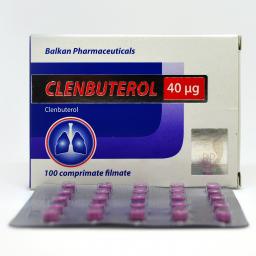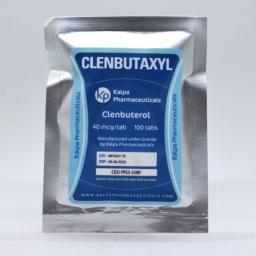Fresh vs frozen
Q. Is there much difference in the nutritional value of frozen and fresh vegetables?
It all depends on how fresh they were to start with and how you cook them. ‘Fresh’ no longer means ‘just picked’. If your fresh vegetables have sat at the markets, then at the greengrocer and then in your fridge before you prepare them, their vitamin levels will have already declined. And if you overcook them or hold them warm for more than 5 minutes, that further destroys some (not all) of the nutrients. It’s mostly the heat-sensitive vitamins – C and B group – that are affected. The content of minerals and fibre remains the same. So frozen can be as good as fresh as long as you cook them quickly in as little water as possible.
On the other hand, uncooked fresh vegetables – like a salad – give us a higher intake of these vitamins plus many antioxidants. I often recommend a salad a day for just this reason.
Microwaving away the goodness?
Q. Does microwave cooking destroy the goodness in your food?
No. In fact, microwaving retains a great many more nutrients than does boiling as it uses little or no water so you don’t leach out the valuable nutrients into the surrounding water. And it cooks food fast by ‘energising’ the particles of water within a food. So microwaving rates on a par with steaming. This means that the heat-sensitive vitamins – B vitamins and vitamin C – are not depleted as much.
Most other nutrients are not affected adversely by any cooking method. In fact, cooking improves the digestibility of most proteins and increases the availability of lycopene and other fat-soluble vitamins by softening tough outer cell walls. Mineral and fibre content do not change.
Healthy recipes
Q. How can you tell if a recipe is healthy?
Look at these 4 key things:
1. It excludes unhealthy ingredients Look down the list of ingredients. If they contain a lot of sugar, lots of fat, white flour, white rice, it probably isn’t that great for your health.
2. It is based on healthy fats and not too much of them. A little oil is fine but you don’t want recipes that call for lots of butter, cream, sour cream, mascarpone or copha. Save these ones for a special occasion.
3. It doesn’t have large amounts of salted ingredients Stock (liquid or cubes or powder), soy sauce, fish sauce or similar Asian salty sauces, bacon, anchovies and cheese all mean a high intake of sodium (salt), which is harmful to your blood pressure. You can choose to leave out the salt from you can’t take out the salt from these ingredients.
4. It employs a healthy cooking method Steaming, grilling, roasting on a tray in the oven or pan frying in a non-stick pan with a thin smear of oil are all good for you. Deep frying or shallow frying in a pan is not.
Less oil in carrot cake
Q. I would like a substitute for oil in a carrot cake recipe. I love carrot cake but am very conscious of oil intake. Do you think I could use yoghurt?
I love carrot cake too! But I feel you can’t eliminate the oil completely as the cake won’t have a good flavour (and oil is healthier than the butter or sour cream used to make most cakes).
You could try using only half the quantity of oil and substitute the other half with apple puree (canned or bottled or home-made) rather than yoghurt. The apple keeps a cake moist and functions more like a fat than fruit.
Freezing uncooked meat
Q. Is it safe to refreeze uncooked meat once it has been thawed?
Generally no. Once your meat has thawed and is ‘soft’ when you press it with your finger, it is best NOT to re-freeze. But if your meat is still partly frozen and ‘firm’ to touch, it’s OK to pop back in the freezer. The safest way to defrost meat, poultry or fish is overnight in the fridge. Food defrosted this way never reaches a temperature over 4 degrees Celsius so food poisoning is avoided. If you are stuck with a lot of thawed meat, your safest option is to cook it as a casserole or curry and then freeze it as a finished dish.
Nutrition losses during processing
Q. When whole grain rice is processed into a puffed rice breakfast cereal, are the vitamins lost?
Processing any whole grain with milling and high temperature steaming or toasting into breakfast cereal results in losses of both vitamins and minerals. Fortunately in Australia our food industry is allowed to ‘add back’ nutrients so the end product continues to be a nutritious food –although it will always have less than the original whole grain with its full complement of nutrients. Typically four B vitamins and iron are added, but manufacturers may add others. To know which nutrients your cereal is fortified with, simply check the ingredients list on the pack.
Big meals or small snacks
Q. From a health viewpoint, how many meals is best – three main meals a day or several smaller ones?
Three meals a day is not a hard and fast rule. In some African villages, men and women work all day without consuming more than a light snack. However, their evening meal is long, with many courses. Many people are unable to consume three large meals and fare better on five or six small meals over the day. Children and adolescents in particular need between-meal snacks as their energy needs are high, but their capacity is limited.
Interestingly, research has shown that people who snack frequently tend not to consume more kilojoules than those having just three meals a day. Some studies even show they are more likely to be slimmer. Nutritionists think this may be due to better appetite control and a boost in metabolic rate with more frequent eating.
The bottom line: If you plan to start eating mini-meals over the day, make sure you decrease the size of your three main meals. So instead of a sandwich, fruit and yoghurt for lunch, just eat the sandwich and save the fruit and yoghurt for 3pm.
Flavour without salt
Q. Is there a substitute for salt in cooking to add flavour without the health risk?
The healthiest way to substitute salt is by cooking with lots of garlic, onion, ginger, spices, lemon and fresh herbs. It takes about two weeks, but once you start cooking this way, it won’t be long before you begin to enjoy food’s true flavours unmasked by salt. Or you can buy a salt substitute based on potassium chloride rather than sodium chloride which adds a salt-like flavour. But before you buy this, check with your doctor, as too much potassium can be harmful if you have kidney problems or are taking certain medications.
Iron-fortified milks and calcium
Q. Are iron-fortified milks beneficial? I have read that iron is not absorbed effectively when mixed with a dairy product. Is this correct?
Iron from non-meat sources (known as non-haem iron) is poorly absorbed by the body. In theory, many factors in the diet can make this absorption worse, including the calcium in dairy products, the tannins in tea and coffee, and the phytates found in beans, lentils and bran cereals. Recent research has revealed, however, that the net effect of these ‘inhibitors’ on iron absorption may not be as bad as we think. And vitamin C (which is also added to iron-fortified milks) can significantly improve iron absorption. So whilst the iron absorbed from these milks may not be that great, when compared to red meat, it will still be better than if these milks were not consumed at all. If you have iron deficiency anaemia or you eat no meat, products like these can make a difference to overall intake. Calcium intakes have to be quite high before they interfere with iron absorption – more likely with calcium supplements than from food alone.
Best Steroid Products Online
Testoxyl Cypionate 250
|
Clenbuterol 40
|
Clenbutaxyl
|


